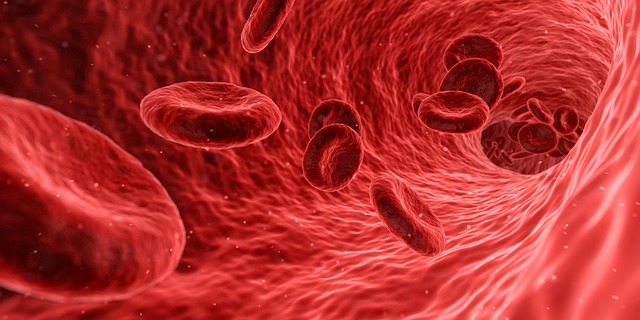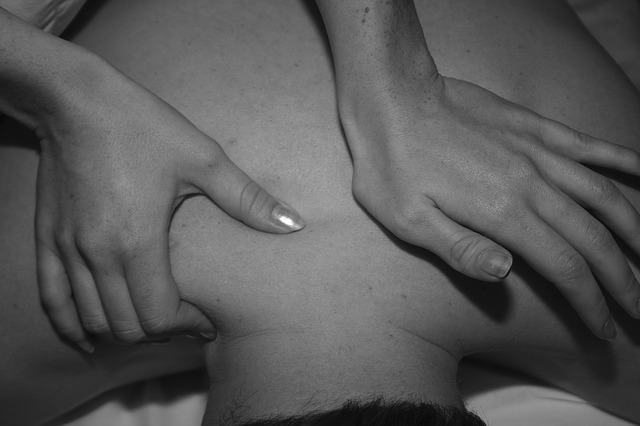Posts Tagged ‘chiropractic’
Pillow Talk: Supporting your Spine to Sleep Better
Not all sleep is equal
Sleep should be a time of rest and rejuvenation but, for many people sleeping in subpar settings, it can actually be a time that contributes to a cycle of stress and back pain. Comfort of body and mind are what let us fall asleep; comfort influences feelings of calmness, which lead to feelings of relaxation, in which your body is able to reduce energy expenditure and focus on resting. Sleeping on an old mattress with ill-fitting pillows hardly sets the tone for such a scenario. So let’s truly define comfort as the combination of a physical state of being and state of mind in which you are able to sleep restfully and protect the health of your spine. Changing the way you use your pillows is a key way to influence a healthier sleep life.
Mobilization is Gentle Therapy for the Spine
Stiff spinal joints limit range of motion and cause pain
Whether it’s due to the chronic inflammation involved in arthritis, acute injury, or tight muscles surrounding the joint capsules, a stiff and sore spinal joint is sure to throw a wrench in your best laid plans. And that wrench often hurts- the stiffness itself is a precautionary measure telling your body not to move this particular region excessively in order to avoid reaching a breaking point. The cruel irony is that motion actually facilitates healing so, in order to reduce stiffness and pain, we need to focus on improving range of motion. How do we do that? Spinal mobilization.
Support Your Spine By Resetting your Posture
Your spine consists of four primary curves
The cervical curve at the top of your spine consists of 7 vertebrae in a concave shape; the thoracic consists of 12 vertebrae in a convex shape; the lumbar 5 of the largest vertebrae in the spine forming a concave shape; and finally the sacral curve, consisting of 5 fused vertebrae and a convex shape. These curves link together to form the S-shape of your spine, enabling it to compress and expand in order to perform shock absorbing and movement duties. The essential shape of your spine is important for staying upright and preventing pain, but there are many forces working against you. Over time, the compressive nature of gravity, along with other factors, conspires to alter the curvature of your spine.
How Painkillers Hamper Athletic Performance
Is it acute injury or normal aches and pains related to exercise?
This is the question all athletes should ask themselves before they reach for the painkillers. Non-steroidal, anti-inflammatory drugs, NSAIDs for short, such as advil and ibuprofen, are ubiquitous in the athletic world because they offer pain relief for many of the aches and pains that are part and parcel of working out. They provide this pain relief by blocking the body’s production of prostaglandins, which are partly responsible for the body’s perception of pain. However, there are also good prostaglandins, like the ones that protect your stomach lining. Painkillers interfere with athletic performance by:
- Limiting hypertrophy and preventing the efficient recovery of muscles and connective tissue
- Contributing to overuse syndrome by tricking your body into ignoring pain
- Interfering with protein synthesis
- Inhibits nutrient absorption
Blood Circulation and Sleep: The Vital Link
Increasing blood circulation can help you sleep better
Sleep is a regulated function of the brain. The brain controls your ability to fall asleep by limiting arousal signals; in essence, it is inhibiting activity in the parts of the brain which are responsible for wakefulness, causing the body to transition from the stable state of wakefulness to the stable state of rest. But how can we reasonably expect the brain to perform such a specialized function if it is starved of the ingredients it needs to function properly?
Why Chiropractic is Effective Pain Relief for Sciatica Sufferers
Sciatic nerve pain is not your friend
Sciatica is characterized by pain that begins in the lower back and radiates to the lower extremities. Symptoms are often experienced only in on leg and include: pain that begins in the lower back and radiates downward, as well as numbness and weakness in the legs and feet, But the important thing to remember is that sciatica is not a condition itself, but rather a symptom of another condition. The pain is most likely being caused by compression of the sciatic nerve, the largest nerve in the human body which runs from the lower spine through the buttock, the back of the thigh and all the way down to the foot. A compression at any point along the way can cause dysfunction, but it is most often impinged upon because of misalignment in the lower back.
Pressure Relief for Overburdened Spines
Positions that put the spine under the most pressure
Humans have a habit of putting their spines under pressure. Many of the most common positions that we assume throughout the day pressurize the spine, including:
- Leaning forward
- Lifting and bearing weight
- Sitting by itself
- Sitting and leaning forward
- Forward head posture
How many times do you perform each of these motions, consciously or not, each day? It is a credit to our spines that they are resilient enough to keep us healthy for any length of time given such consistent pressure. At OFW Chiropractic we believe it’s time to step up our level of awareness when it comes to how we treat our spines.
Embracing an Ergonomic Lifestyle
Ergonomic injuries are on the rise
The more people we bring into the white collar job market, the more we send down the road toward degeneration of the spine and disability. Ergonomics is an applied science that studies human efficiency as it relates to the surrounding environment. Few employers are ethical enough, or are willing to invest enough money, to lift the overall ergonomic standard of their offices. The onus is therefore upon the workers to optimize their own ergonomic situation. At OFW Chiropractic we have a plan to help you embrace a lifestyle that helps you avoid ergonomic injuries and prevent the onset of conditions that make lower back pain the number one workplace complaint.
Radiculopathy: Nerves Under Pressure
Radiculopathy is nerve compression
Modern medicine knows comparatively little about this irritating condition that occurs when nerves exiting the spinal cord are compressed. Symptoms of radiculopathy include:
- Pain and weakness in the affected area
- Referred pain in other parts of the body
- Feelings of tingling or numbness
- Weakness in the extremities
We most commonly detect radiculopathy in the lumbar and cervical segments of the spine, and the most common risk factors for radiculopathy include:
- Physically labor intensive jobs
- Tasks that involve repetitive trauma
- Overly-sedentary lifestyles
White Collar Back Pain
Office work has become the predominant source of back pain in the 21st century
The stats don’t lie: more than a million workers in the US are affected by back pain related complaints each year; and the umbrella category of back pain is responsible for more lost work hours than any other musculoskeletal complaint. While it may make more sense that nurses or construction workers suffer pain due to the demands of movement involved in their jobs, white collar workers face the opposite problem: the demand of no movement, which is proving to be just as insidious when it comes to the spine.










